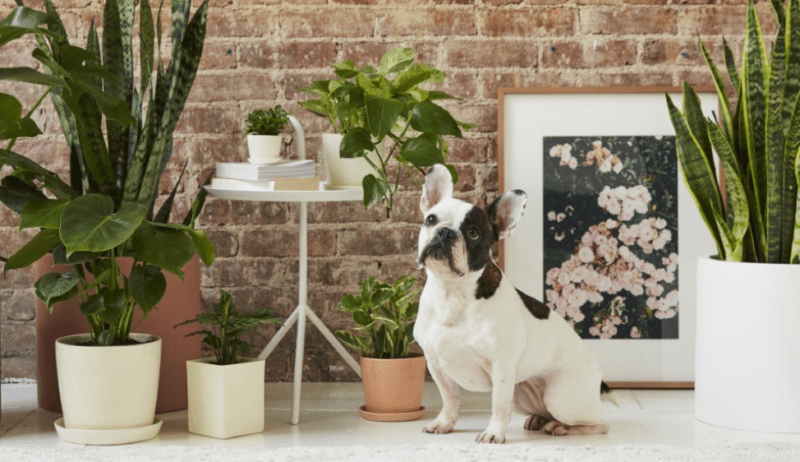
Here are 8 beautiful pet-safe plants that you and your furry friend will appreciate.
Why do our cats and dogs like to eat plants? Some theories say that they eat plants to help alleviate stomach pains, help with digestion, or simply out of boredom! While it may be difficult to prevent your pets from eating possibly poisonous plants, the best thing to do is to have pet-safe plants in your house in case they do decide to nibble on them.
- Money Tree
The money tree (pachira), or money plant is a great houseplant to carry for reducing toxins in the air. This plant is known for inviting luck and prosperity, but it also reduces formaldehyde, making it a good choice for a person with asthma or other lung issues. Plus, the money tree is a safe plant for our curious friends.
- Palms
Palm plants are beautiful plants to carry outdoors and indoors. A few beautiful palm plants that are low maintenance are the kentia palms, rhapis palms, bamboo palms, neanthe bella palms or a ponytail palm (not really a palm, part of agave family). These are sure to add a pop to that corner you’ve been meaning to brighten up, without the danger to our furry friends.
- Rattlesnake Plant or Calathea Family
The Rattlesnake Plant is known for its cool stripes and its fascinating leaf movements. Because of a flux of water pressure in the nodes at the base of its leaves, it raises and lowers them from day to night! Water this plant weekly and place it in medium to bright indirect light.
- Boston Fern
Boston Ferns are extremely popular and are mostly known for its air purification features. This member of the Fern Family works as a living air humidifier and is safe for cats and dogs to play with. This makes it a perfect plant for people and pets stuck indoors.
- Spider Plant
Looking for a safe, lush, and colorful plant to display? The spider plant (Chlorophytum comosum) is a beautiful plant with green and white leaves. It is considered one of the most adaptable of houseplants and the easiest to grow.
- Hoya
The Hoya plant is a part of the wax plant family because of their thick, waxy leaves. Hoya is a genus of 200–300 species of tropical plants in the family Apocynaceae. These plants live forever and can grow to be enormous! Their thick leaves are safe for pets and are also very durable. It is best to place Hoyas on high shelves because their dangling stems can be very attractive play things for younger cats.
- African violet
For an added pop of color, the African Violet (Saintpaulia) is a great choice. This plant typically bears purple to pinkish leaves and thrives in sunny spots. African violets will bloom with lower light, though medium to bright indirect light is best. Keep soil moist to dry. Allow soil around roots to dry out before watering to encourage blooming. Avoid getting water on the leaves as this can cause spotting damage.
- Peperomia
Peperomia is one of the two large genera of the family Piperaceae, with more than 1000 recorded species. Peperomia’s are small plants which are similar to hoyas in their care. Both are succulent like with fleshy leaves and stems. They make wonderful houseplants and can be found in both hanging and upright forms. Aside from being a beautiful addition to home decor, peperomia plants are relatively safe and fun companions for your household pets!
Incorporating houseplants into your interior design can refresh your living space and add splashes of life and color to your daily routine. With pets, there is an added precaution when choosing the right plant for you and your home.
If you have a concern, you can always look up poisonous plants on the ASPCA website: https://www.aspca.org/pet-care/animal-poison-control
The ASPCA Animal Poison Control Center (APCC) is your best resource for any animal poison-related emergency, 24 hours a day, 365 days a year. If you think your pet may have ingested a potentially poisonous substance, call (888) 426-4435.

